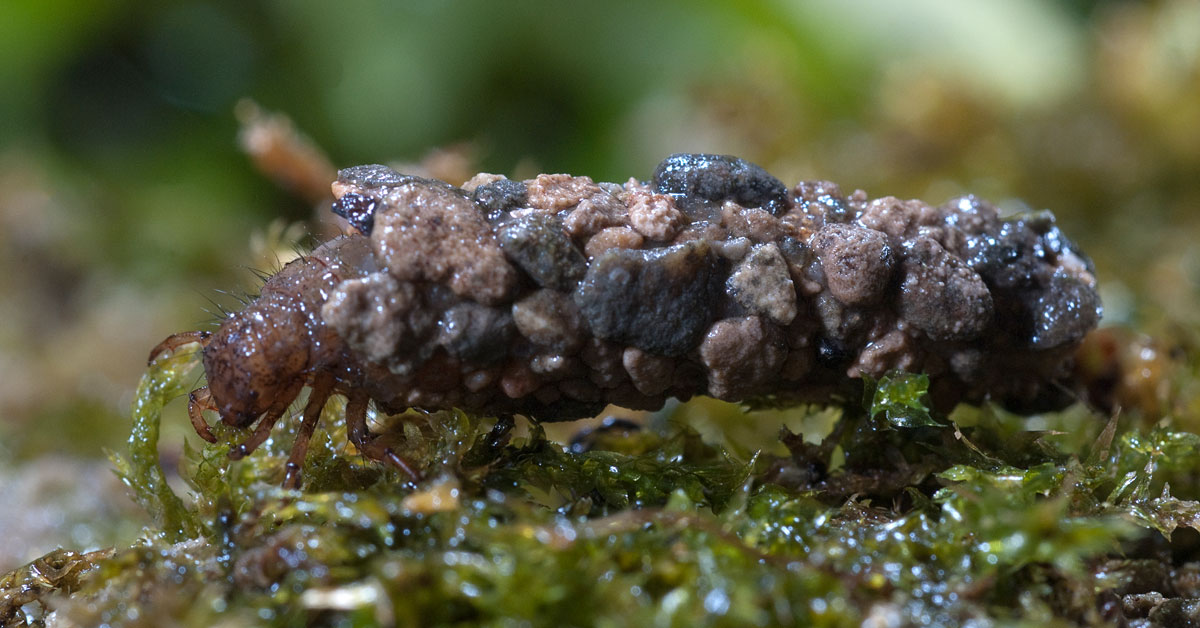
New study points to further adverse effects on non-target organisms
The effects of GM Bt insecticidal crops on non-target organisms is a contentious topic. The lobbyist Mark Lynas has made a misleading claim about the safety of these crops by generalising the findings of two studies on a narrow selection of non-target organisms, to make the sweeping assertion that "genetically modified, insect-resistant Bt crops do not have harmful effects on beneficial bugs in farmers’ fields".
However, a large body of studies – which Lynas doesn't seem to have read – document the harmful effects of GM Bt crops, and the Bt toxins they contain, on non-target creatures. These creatures include insects helpful to farmers, such as honeybees and the pest predators ladybirds and lacewings. Aquatic organisms and beneficial soil organisms are also harmed by these crops and toxins, as are mammals. Some relevant studies are collected in the book GMO Myths and Truths. Other studies show that Bt toxins of the type contained in GM Bt crops harm Daphnia magna, a type of waterflea often used as a model species in ecotoxicological studies.
Caddisfly larvae play an important role in the aquatic community, reducing plant growth and helping to break down animal and plant dead material (detritus). A 2007 publication by Emma Rosi-Marshall et al showed adverse effects from GM maize on detritus-feeding caddisflies. However, studies that look at the impact of GM crop residues on detritus-feeding caddisfly larvae (Trichoptera), which are closely related to the Lepidoptera (an order of insects including butterflies and moths) targeted by some Bt toxins, such as Cry1Ab, showed variable effects and an inconclusive picture.
Now a new study shows that GM Bt crop toxins do have harmful effects on caddisfly larvae in conditions reflecting realistic environmental exposures. The study investigated two types of caddisfly, Chaetopteryx spec. and Sericostoma spec., in a feeding experiment in which Cry1Ab toxins were spiked onto black alder leaf discs and fed to the larvae.
The researchers used exposure times of 6 and 12 weeks. This was longer than many studies reported in the literature, which often have durations of 30 days or less. The authors state that maize debris enters water bodies in October after harvest, is highest in February, and stops after growth of new vegetation in April, so aquatic organisms are exposed for a long time period to low Bt toxin concentrations in the environment. Therefore they believe that their experiment "realistically" reflected real-life environmental conditions.
The researchers found that the mortality of Chaetopteryx spec. larvae increased in all treatments with the study duration, though there was no statistically significant difference between treatments. A 2-fold higher mortality was nonetheless reported at the highest concentration relative to the control, suggesting a dose-dependent response.
In Sericostoma spec., no significant difference regarding mortality was reported. However, significant effects were found on larval lipid (fat) content (Chaetopteryx spec.) and development (Sericostoma spec.) at the two higher concentrations tested.
The authors point out that previous studies have found differentially expressed proteins in a GM maize relative to its non-transgenic isogenic line, although the biological relevance of such changes remained unknown. But, they add, "Because nutritional quality of food leaves is the same both in the control and treatments groups, our food-spiking method strongly suggests that the responses of caddisfly shredders are largely triggered by the [Bt] toxin."
They concluded that "long test durations and the use of sublethal endpoints are reasonable and may assist assessment of risks" of GM Bt crops.
---
Effect of Bt toxin Cry1Ab on two freshwater caddisfly shredders – an attempt to establish dose-effect relationships through food-spiking
Antonia Pott, Mirco Bundschuh, Rebecca Bundschuh, Mathias Otto & Ralf Schulz
Scientific Reports volume 10, Article number: 5262 (2020)
https://www.nature.com/articles/s41598-020-62055-2
Abstract
Genetically modified organisms (GMOs), which produce Bacillus thuringiensis (Bt) toxins, are widely used in agriculture in some parts of the world. Despite this, ecotoxicological methods, tailored to GMOs, are lacking to assess effects on aquatic environments. With the objective to investigate a food-related exposure pathway for aquatic shredders, we used a new food-spiking method while caddisfly larvae (Chaetopteryx spec., Sericostoma spec.) served as test species. Pure Cry1Ab toxins were spiked on black alder leaf discs and subsequently used in a feeding experiment. The toxin did not influence larval mortality compared to the control. The results, however, showed significant effects on larval lipid content (Chaetopteryx spec.) and development (Sericostoma spec.) at concentrations of 17.2 and 132.4 ng Cry1Ab/mg leaf, respectively. These changes are indicative for impacts on the fitness of the specimen and thus relevant in a risk assessment context. Ultimately, the food-spiking method allowed applying different Bt toxin concentrations leading to the establishment of dose-response relationships for various response variables. The use of long test durations and sublethal endpoints (consumption, lipid content, growth, larval instars) is, moreover, advisable when testing GMO effects.